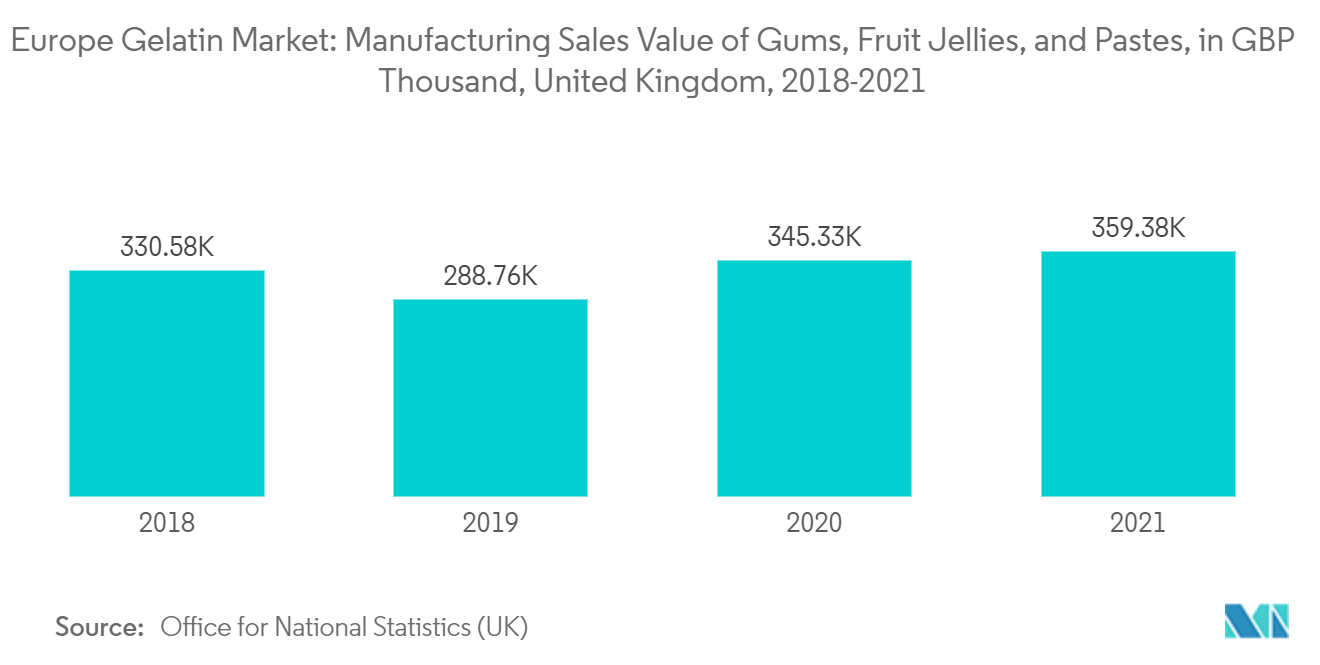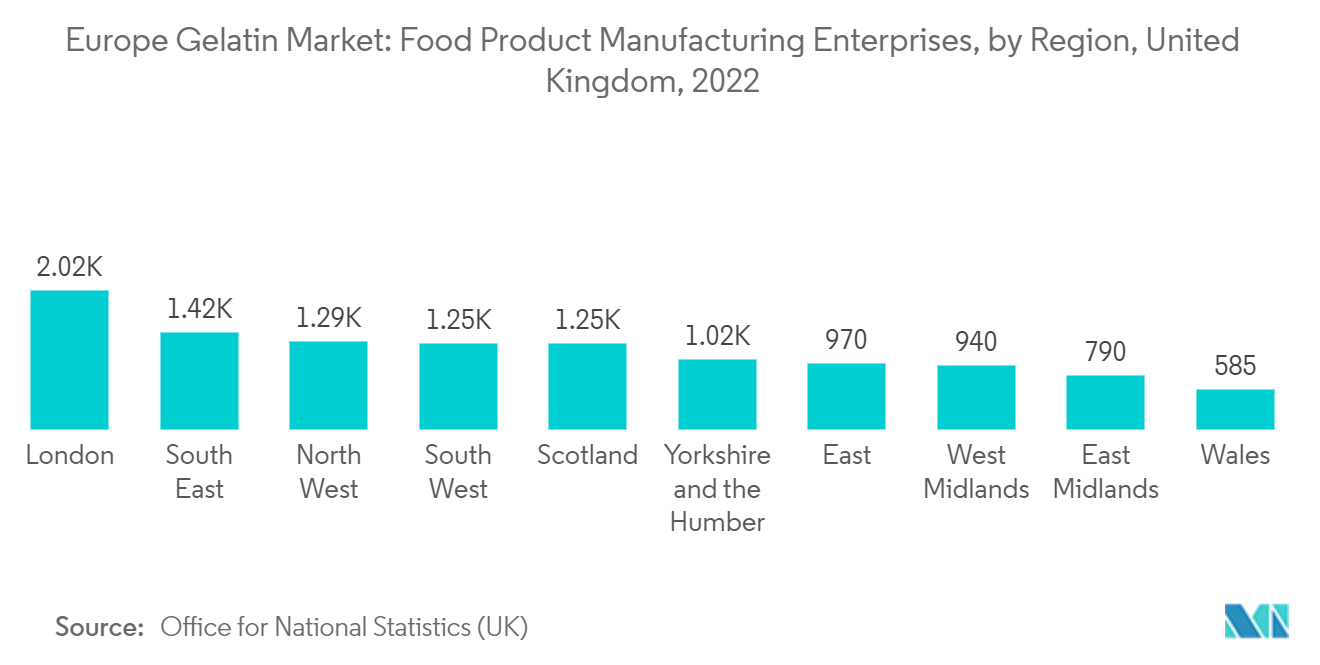Market Trends of Europe Gelatin Industry
Functional Properties of Gelatin are Driving its Usage in Various Industries
- Gelatin is majorly used for its functional properties by both consumers and manufacturers. In the food industry, gelatin is used for its gelling, emulsifying, stabilizing, and other unique functionalities to enhance food texture or enhance taste, for example, or to solve a wide variety of problems in the manufacturing of food. Gelatin is also used by various culinarians across Europe in many ways as an ingredient that enables them to create enhanced products. Gelatin is preferred by manufacturers as it is excellent for stabilizing and gelling mousses, thickening broths, creating glazes, and giving food great body and texture.
- Similarly, there is an increasing demand for convenience food and beverages due to changing lifestyles, an increasing working population, and consumers who lack the time and effort which is required to prepare home-cooked food are more inclined toward convenience food products that are functional and fortified with healthy ingredients. Gelatin is used as a gelling, emulsifying, and stabilizing agent in bakery and confectionery food products, this rise in convenience food consumption is expected to significantly support the market's growth in the region. Moreover, the rising trend of health consciousness and nutritious food is propelling the growth of the market.
- Similarly, the demand for gums and jelly products that include gelatin as a major ingredient and offer taste, convenience, and can be consumed instantly are popular in the region, which is supporting the market's growth. They are often offered with functional properties as they contain various vitamins and minerals that support the human body. Also, various supplement manufacturers are offering their products in gum and jelly formats to offer convenience and attract consumers, which also requires gelatin in the manufacturing process. Moreover, gums and jelly (also known as gummy candies or jelly sweets) have been popular confectioneries in the region, and these chewy, colorful, and flavorful treats are appreciated by people of all ages and are widely available in various shapes, sizes, and flavors. For instance, their popularity can be depicted by their sales in the region. According to the Office for National Statistics (UK), in 2021, the sales value of gums, fruit jellies, and pastes increased to approximately GBP 359 million (USD 495 million), which was only GBP 345 million (USD 475 million). Gelatin being the major component in such products, the market is experiencing great demand from respective manufacturers in the region, thus driving its growth.

United Kingdom Dominated the Market
The increasing demand for convenience and processed food such as ready-to-eat foods, ready-to-drink beverages, snacks, frozen meals, and others that include gelatin as one of the prominent ingredients is one of the significant factors driving the market growth in the region. Additionally, with the rise in urbanization, growing middle-class population, increase in the number of working women, and the rise in disposable income, the developed and developing countries across the region are witnessing a rising demand for processed and packaged food, which is thereby increasing the need for food processing solutions. Therefore, as gelatin is majorly used as a stabilizer, thickener, or texturizer in such processed and convenience foods, its market is expected to grow at a good pace during the forecast period.
Gelatin is mainly driven by the bakery segment in the United Kingdom. This share is mainly attributed to gelatin's functional traits, as it can be used as a transparent gelling agent and thickener in baked goods, like pastries, cakes, marshmallows, and other bakery icings. It is also a favored option for food and beverage businesses in the United Kingdom due to its 20-30% lower price range than collagen protein. Gelatin contains approximately 87-92% protein and all essential amino acids except tryptophan.
Moreover, with the increasing number of food manufacturing enterprises in the country, the need and demand for gelatin is growing every year. For instance, according to the Office for National Statistics (UK), there were approximately 12,465 food product manufacturing enterprises in the United Kingdom (UK). The highest number of food manufacturing enterprises could be found in London with a total of 2,020 enterprises, followed by the Southeast with 1,420, and the Southwest of England. The Northeast was the region with the fewest enterprises involved in the manufacturing of food, amounting to 345. Similarly, the increasing usage and sales of products that include gelatin is also supporting the market to become more mature. Products like gummies, chewy candies, cream cheese, margarine, peanut butter, low-fat spreads, snack food coatings, and seasonings, including peanuts among others are being highly consumed in the country. Such factors are expected to eventually drive the market's growth during the forecast period.


